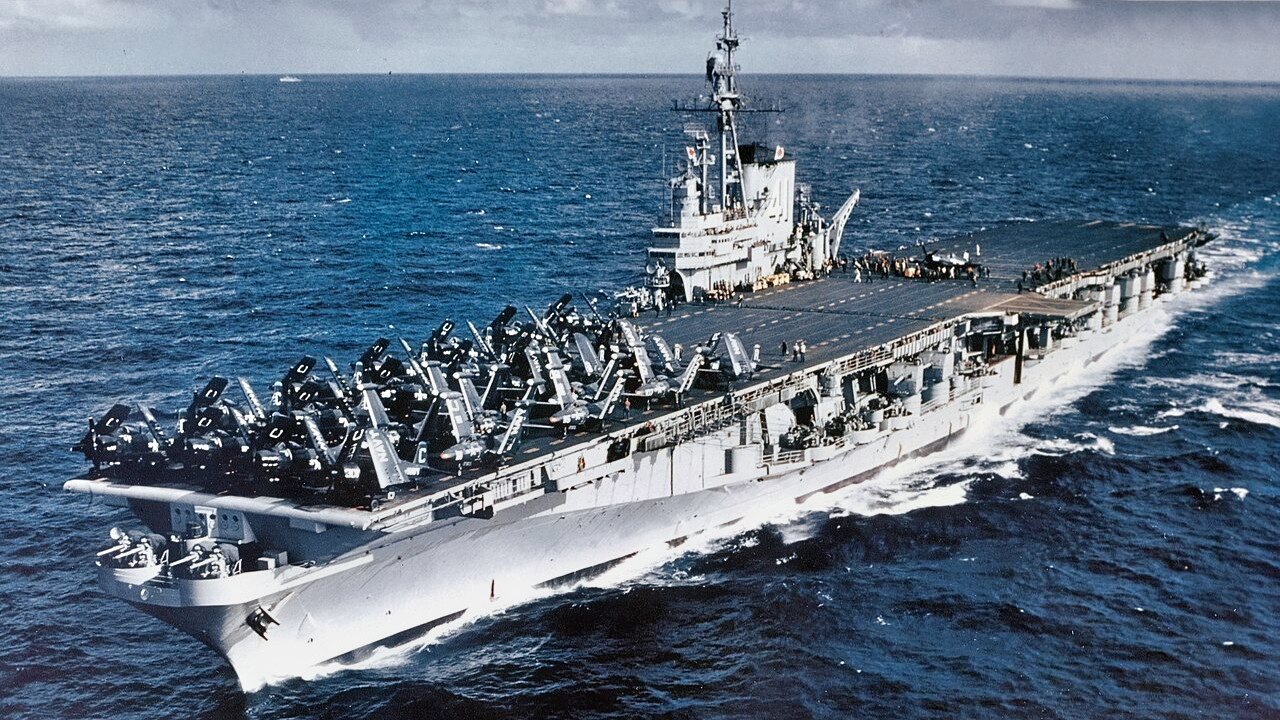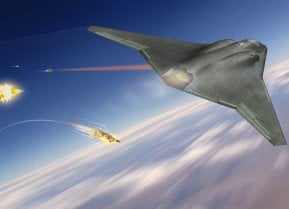USS United States: The Aircraft Carrier That Was Cancelled 5 Days Into Construction
The USS United States supercarrier was envisioned in the late 1940s as a response to the emerging strategic needs of the nuclear age and the advent of jet fighters, which required larger and heavier aircraft capable of carrying nuclear bombs.
Summary and 4 Points You Need to Know: The USS United States was a proposed supercarrier designed in the late 1940s to accommodate larger aircraft capable of delivering nuclear bombs.
-It featured a flush deck to handle jet fighters and strategic bombers, but challenges like the lack of superstructure and radar capabilities arose.
-The ship was canceled in 1949 by Secretary of Defense Louis A. Johnson, sparking the "Revolt of the Admirals," a major controversy that led to Johnson's removal.
-Despite the setback, the Navy later became part of the nuclear triad with the development of Polaris missile submarines.
USS United States: The Supercarrier That Never Sailed
The Second World War proved the supremacy of the aircraft carrier as the ultimate naval platform. However, it raised new questions with the introduction of the atomic bomb as a significant strategic weapon.
This development, coupled with the rise of jet fighters, threw carrier design into turmoil. As the 1940s drew to a close, naval planners created the United States-class of super aircraft carriers as their vision for the coming decades of naval aviation and nuclear employment.
Ultimately, interservice rivalry and questionable actions by then Secretary of Defense Louis A. Johnson caused the ship and class to be canceled before construction was finished.
USS United States: An Aircraft Carrier for the Nuclear Age:
Proponents of the Strategic Bombing doctrine had been disappointed by results during the Second World War, which saw bad weather and heavy anti-aircraft fire severely diminish the effectiveness of such campaigns.
The advent of the nuclear bomb revived thoughts of strategic bombing supremacy, and many in the military establishment viewed the Strategic Air Command (SAC) of the newly formed U.S. Air Force as the ultimate arm of the U.S. military.
Budgetary drawdowns in the wake of the war saw bitter scraps between the services as they each fought for a smaller piece of the pie. The U.S. Navy saw the writing on the wall that SAC was the new darling of the defense establishment and administration and so sought to muscle in on strategic nuclear bombing and the money that came with it.
Unfortunately for the U.S. Navy, the Fat Man and Little Boy bombs - at the time, the only nuclear weapons available - were too large to be carried aboard any aircraft currently in the Navy inventory. The rise of jet fighters, which were inherently larger and heavier than their propeller-driven counterparts, also carried design considerations for aircraft carriers.
To account for these challenges, designers created the United States class of supercarriers. Although the Midway class currently in service were only 100 feet shorter than the proposed design, the unique flush deck look of the United States drew the supercarrier moniker.

To accommodate larger and heavier aircraft, the proposed ship had no superstructure. Instead, the entire top of the vessel was the flight deck. This would allow aircraft with a greater wingspan - such as those large enough to carry nuclear bombs - to take off and land easily.
The design was not without challenges; however, as the Navy had discovered with the USS Langley, its first aircraft carrier, a flush deck design creates difficulty in venting exhaust gasses from the engines.
Furthermore, the proposed bombers would be too large to fit on an elevator. Instead, they would be stored in the open on the flight deck. Furthermore, the lack of a superstructure meant the carrier could mount its early warning radar.
This problem was circumvented with a command ship and escort carriers - the thought was each United States would be escorted by a Midway and two Essex class carriers.

USS United States Controversy and Cancellation:
Ultimately, the USS United States was not to be. Although the keel for the first ship was laid, it was canceled five days later. Secretary of Defense Louis A. Johnson unilaterally canceled the program, prompting the “Revolt of the Admirals,” an unsuccessful attempt by senior Navy leadership to save the ship.
Nevertheless, the controversy prompted resignations and a congressional investigation that resulted in President Truman removing Johnson from his post.
While the Air Force had preserved their role as the sole service capable of strategic nuclear bombing, the Navy would soon assume control of one leg of the nuclear triad when Polaris nuclear missiles were placed aboard U.S. subs at the end of the 1950s.

Further advances in technology decreased the size of nuclear bombs allowing carrier based aircraft to carrier tactical nuclear weapons until the 1990s.
About the Author: Maya Carlin
Maya Carlin, National Security Writer with The National Interest, is an analyst with the Center for Security Policy and a former Anna Sobol Levy Fellow at IDC Herzliya in Israel. She has by-lines in many publications, including The National Interest, Jerusalem Post, and Times of Israel. You can follow her on Twitter: @MayaCarlin.
Image Credit: Creative Commons.


